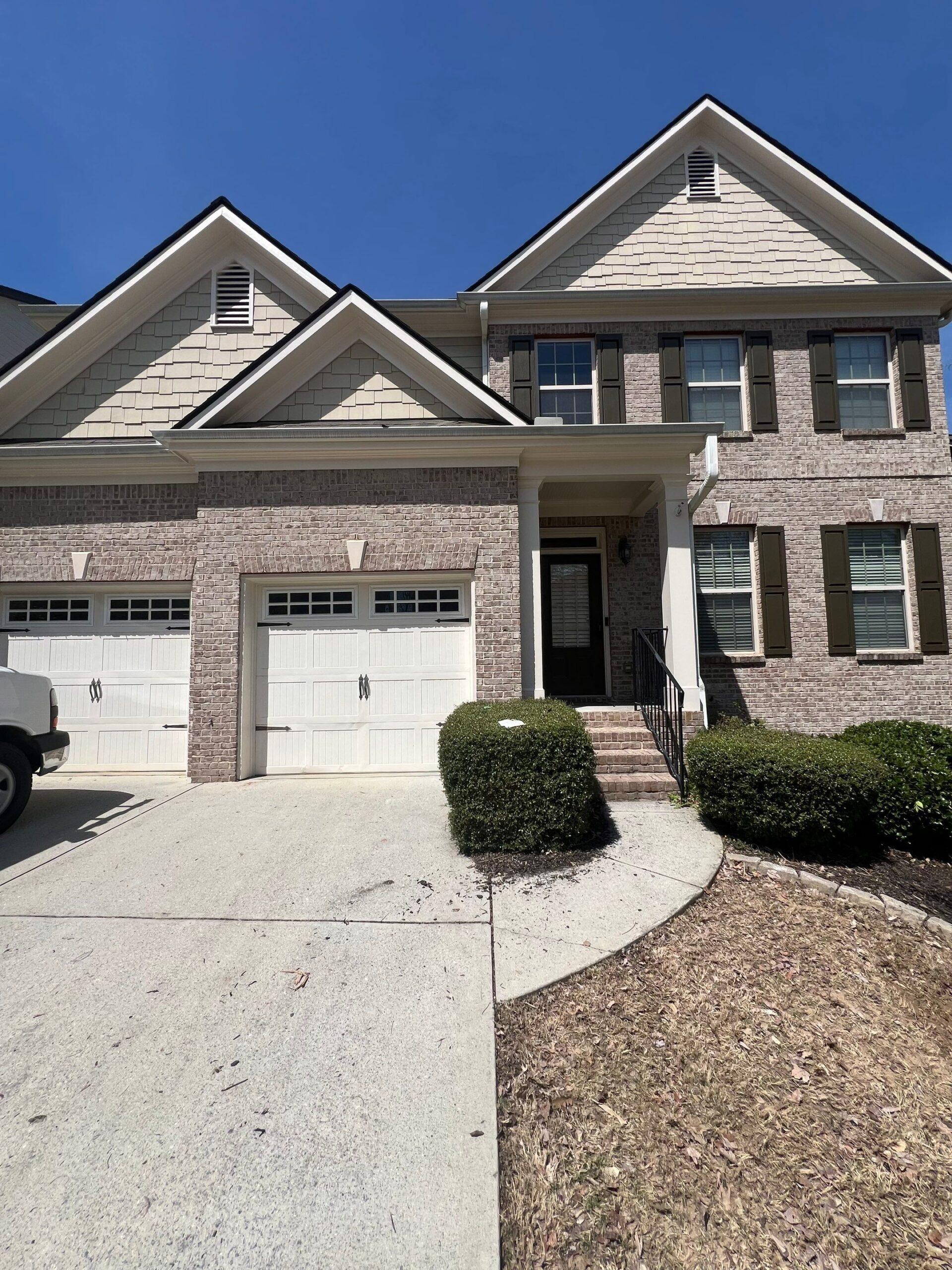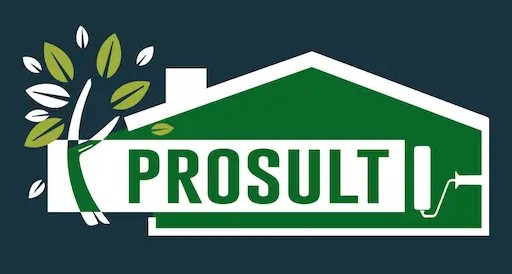If you’re thinking about painting your home exterior in Atlanta, GA, timing matters more than many people realize. We often hear questions like, “Is this a good time to paint the house?”
The truth is, while paint color gets most of the attention, it’s the weather that can quietly sabotage the entire project if you’re not careful.
We’ve seen first-hand what happens when a job starts in the wrong weather. Blistering paint, mildew creeping through the layers, streaks, peeling, and worse—wasted time and money. With that in mind, here’s a breakdown of the weather conditions you should avoid before picking up your brush or calling in the crew.
Key Takeaways:
- Avoid painting within 24–48 hours of rain—moisture trapped under the paint can lead to peeling and mildew.
- Avoid painting in extreme heat; fast drying causes uneven coverage and lap marks.
- Windy days spread dust and debris, ruining fresh paint and increasing safety risks.
- Cold temperatures below 50°F prevent proper curing, especially on wood or masonry.
- Pollen and high humidity in Atlanta affect adhesion and paint texture—always check the forecast.
Do Not Paint Right Before or After Rain
Atlanta weather can turn quickly—sunshine one minute, a sudden downpour the next. That’s why painting right before or after it rains is one of the most common and costly mistakes homeowners make.
Even light moisture on wood, masonry, or vinyl siding can cause serious issues with adhesion. Water trapped beneath the paint can lead to bubbling, peeling, or mildew growth down the road. And just because the surface looks dry doesn’t mean it’s ready. Rain, fog, or pressure washing can leave hidden moisture in pores or seams.
If you’re planning on pressure washing your home before painting (which we highly recommend), give the surface at least 24 to 48 hours of dry weather before starting your paint job. Watch the forecast closely—especially during the Atlantic hurricane season and periods with tropical storm warnings.
It’s also smart to check humidity levels, not just precipitation chances. High moisture in the air can slow drying time and cause the paint to cure improperly.
Avoid Painting in Excessive Heat and Direct Sun
Painting your home exterior during a heatwave is not ideal, even if the sky is perfectly clear. Atlanta summers often bring temperatures well over 90°F, and when direct sunlight hits your siding, the surface can be even hotter. That heat causes paint to dry too quickly, making it difficult to apply evenly and increasing the chances of brush marks and lap lines.
Latex paint, in particular, performs poorly when it flashes dry on the surface but hasn’t bonded underneath. In some cases, this can lead to cracking, blistering, or an uneven finish. If you’re using a spray painting setup, you’re even more likely to have problems with overspray drying mid-air or settling unevenly.
Try painting in the early morning or late afternoon, and avoid sections of the house that are in direct sunlight. Pay attention to surfaces like stucco, metal, or vinyl siding that retain heat—those can stay hot long after the sun has moved.
Windy Days Are Not Paint-Friendly
While a breeze might feel nice while working outside, windy days are not ideal for painting your home exterior. Strong gusts can blow dust, pollen, and other airborne debris directly onto wet paint. The result? A rough finish and a surface that doesn’t look clean, even when it’s freshly painted.
Wind also interferes with application, especially for exterior painters in Atlanta, GA, using sprayers. Overspray can drift onto unintended surfaces, like windows, glass doors, or even cars. Windy conditions are also a safety hazard if you’re working on a ladder near the roofline or upper siding.
Check the weather station or a storm tracker for real-time updates. If the local forecast includes a severe thunderstorm watch or heavy wind warnings, it’s best to hold off.
Cold Weather Slows Everything Down
Atlanta doesn’t experience long winters like some northern cities, but temperatures can still drop below the recommended range for painting. Most exterior paints need a minimum of 50°F to properly adhere and dry. Even if the air warms up during the day, chilly mornings and evenings can still disrupt the drying process.
Painting in temperatures that are too cold leads to extended dry times and poor bonding. If the paint doesn’t cure properly, it may start to crack, chip, or peel sooner than expected. Paints labeled for cold-weather use may help, but they aren’t foolproof, especially on surfaces that hold moisture like clapboard, masonry, or textured siding.
If you must paint in cooler weather, stick to the middle of the day and avoid days with frost warnings, cloudy skies, or rapid temperature drops overnight.
Pollen Season Is More Than Just a Nuisance
Spring in Atlanta comes with high pollen counts, and that’s not something to overlook. Pollen doesn’t just affect allergies—it can also ruin a paint job if it settles on a wet surface. Even a light layer of dust or pollen can keep the paint from sticking properly, resulting in uneven coverage or texture.
Check the allergy forecast before painting your home exterior, especially during early spring when pollen is at its peak. If you’re set on painting during that time, make sure the surface is thoroughly washed and wiped down before painting. Use a plastic drop cloth to help protect freshly painted areas from airborne debris if possible.
Always Watch the Forecast—Closely
This might sound obvious, but checking the forecast is something too many homeowners skip. The weather in the Southeast is unpredictable, especially during hurricane season or in the late summer when pop-up storms are common. Relying on a general five-day forecast isn’t enough. Use a reliable weather app, track radar in real-time, and pay attention to alerts like:
- Severe thunderstorm warnings
- Tropical storm warnings
- Winter storm warnings
- Coastal flood advisories
- Sudden heat waves
These alerts help you avoid starting a project that’ll be interrupted—or worse, ruined—by a sudden change in conditions.
And while you’re planning your timeline, don’t forget the impact of temperature and humidity on drying time. Even the best exterior house paint colors won’t look right if they aren’t applied under the right conditions.
For more on how paint color interacts with light and finish, you can check out our breakdown on what color is best for my exterior home—there’s a lot more to it than just picking something from a swatch.
Final Thoughts
Painting your home exterior in Atlanta, GA is a great investment—but only if it’s done at the right time and under the right conditions. Whether it’s the risk of moisture after a thunderstorm, fast drying during a heatwave, or pollen ruining the finish, the weather plays a bigger role than most homeowners realize.
By avoiding these common weather pitfalls, you’ll extend the life of your paint job, avoid unnecessary repairs, and get the clean, lasting finish you expect.
Oakcliff Painting‘s Exterior Painting Process
Here’s how we delivers top-quality results for homeowners across the Atlanta area:
- Prep work: Includes pressure washing, scraping, sanding, and addressing mold or mildew
- Surface repairs: Filling gaps, replacing damaged wood, and re-caulking where needed
- Priming and sealing: Applying the right primer to match your surface and finish goals
- Professional application: Brush, roller, or spray methods tailored to your home’s exterior
- Final walkthrough and cleanup: We don’t leave until the job is clean, sharp, and done right
Serving Marietta, Johns Creek, Lawrenceville, GA, and surrounding areas, Oakcliff Painting is your go-to expert for exterior home painting.
Call us at 770-405-3449 today for a FREE estimate. Let’s schedule your project when the weather is right—and the results last!



